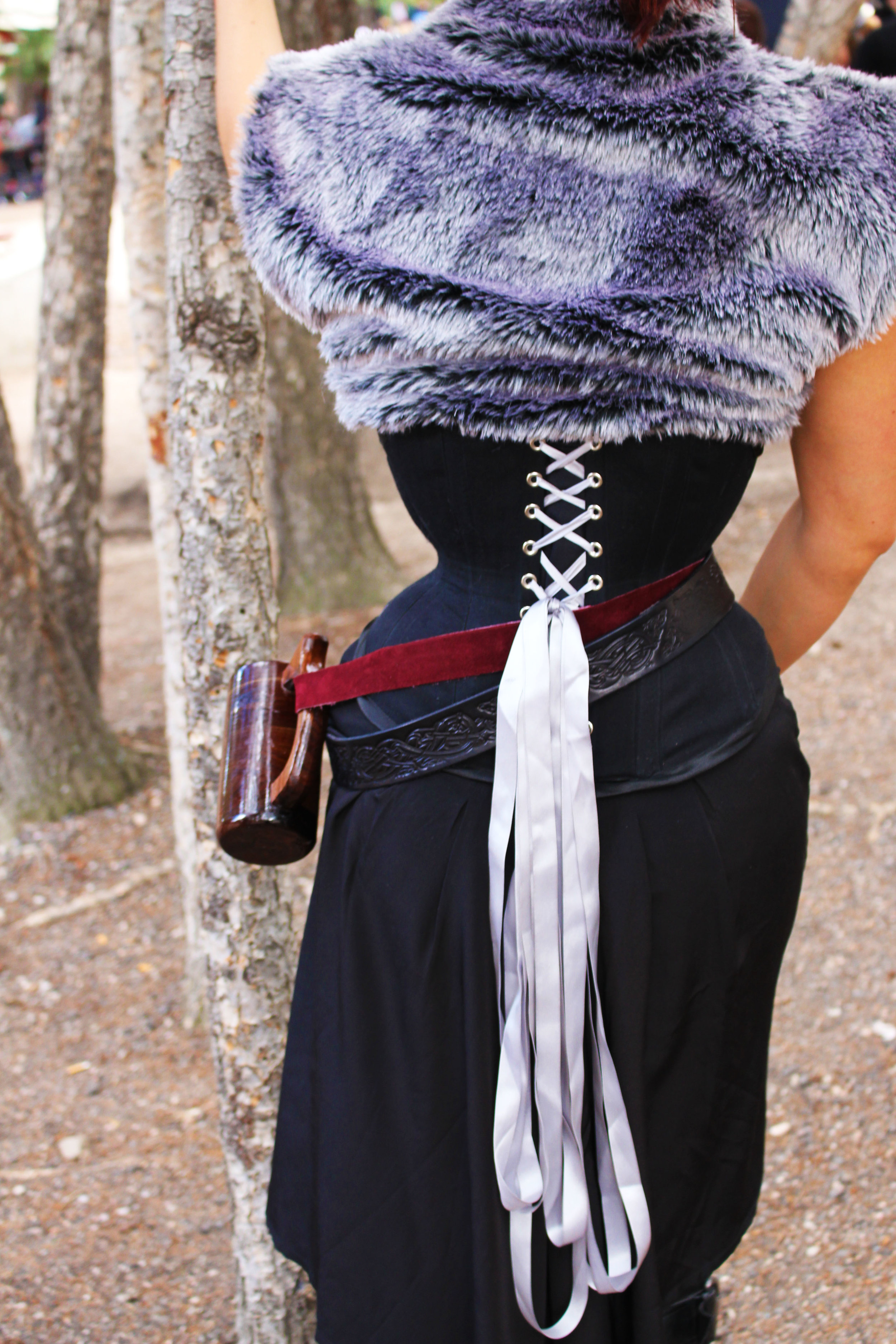How to Break In Your Corset (Seasoning Your Corset)
What does “seasoning” your corset mean?
Once you have received your corset and inspected it to make sure it has arrived in good shape, you are ready to start breaking it in! Breaking in your corset, often called “seasoning”, is an incredibly important stage in your corset’s life, as well as your relationship with your corset. Tightening a corset completely when it is brand new, especially when you have just started waist training, can cause damage to the garment. You may warp bones in your corset, or you may hurt yourself.
The seasoning process allows you to slowly acquaint your body and your new corset so that the two can comfortably begin to mold to one another. The primary mechanism behind this is your body heat and movement. As you wear your new corset for a couple hours, your natural warmth will soften the fibers of the garment, allowing the “hot spots” to loosen up and better form to your unique curves. A great comparison is how one might break in a new pair of boots or heels by wearing the shoes for multiple short periods until they begin to feel comfortable enough for extended wear.
Remember, your corset and body both need time to get to know one another. It is vital to take the seasoning process slowly. There will be plenty of time to lace more tightly later, once you progress in your waist training.
This What Katie Did “Vamp” underbust corset is a great example of what a well-broken in corset looks like. It can be laced nearly closed, and it comfortably follows the curves of the body that is wearing it.
How long does it take?
A fair average time for seasoning a corset is about 2-4 weeks. This time frame may be shorter for your corset, or it may be longer. The key to knowing when your corset is seasoned is that it will feel comfortable.
Factors that may cause your seasoning process to take longer than “average” include:
You are entirely new to steel-boned corsetry or waist training.
The corset is not custom-made to your measurements.
The corset contains stiff flat steel bones around the entire body (versus flexible spiral steel bones).
The corset is built with more than 3 layers of material.
The waist reduction is greater than 20% of your natural waist circumference (i.e. - an 8”+ reduction for a natural waist of 40”; or a 5”+ reduction for a natural waist of 25”).
The silhouette is particularly challenging, such as corset with conical-shaped ribs or a stem-waisted corset (not recommended for first-time waist trainers).
Even if none of these situations apply to you, you absolutely must still spend some time seasoning a corset before it is ready to be put into regular use. Every waist training corset must be broken in!
How Do I Season My Corset?
There are a few standard models for seasoning a corset which you may wish to try. While these options are all potentially effective if you are willing to follow them, you may find that one feels better to you. With time, you may even find a favorite variation of either of these options.
Romantasy’s “Roller Coaster Method” suggests that you increase waist reduction and time spent in the corset gradually, though not at the same time. For example: wear the corset at a 1” reduction for 2 hours on the first 3 days, 1” reduction for 4 hours for the next 3 days, and so on until you have worked up to wearing your corset with a 1” reduction for 8 consecutive, comfortable hours. Then begin again with another half inch of reduction. Spend 3 days with a reduction of 1.5” for 2 hours, and again work up to spending 8 hours in the corset at a 1.5” reduction. Use this pattern to continue to slowly work up toward cinching your corset for longer periods of time. If you are interested in receiving a customized waist training plan, just for you, you may wish to purchase one from Romantasy proprietress Ann Grogan herself.
The “2-2-2” guideline is also a great way to season your corset. With this method, you follow a very straight-forward and easy-to-remember process: Lace your new corset to a 2” reduction for 2 hours each day for 2 weeks. From there, simply begin lacing down your corset and wearing it as it feels comfortable. Sounds easy, doesn’t it? Remember that not all corsets are made the same way, so this might not be enough time to break in your corset if any of the criteria discussed above apply to you. If you find that your corset still feels stiff after this time frame, continue to be patient as you keep working to completely season it. Your corset and your body will thank you!
Do’s and Dont’s of Seasoning Your Corset
Do - Be Patient
Don’t - Sit in Pain
Really, those two items sum it all up. Every other recommendation I can offer you regarding seasoning your corset falls under one of those two concepts. Breaking in a corset takes time, and it cannot be rushed. If you do try to speed up the process, you may end up with a corset that is permanently damaged from the sudden strain put on it. And, while seasoning your very first corset may be a bit uncomfortable initially, it absolutely should not cause pain! If your corset is hurting you, seasoning it or not, take it off immediately.
Seasoning your first corset may seem like an excessive step that stands between you and those curves you’ve been waiting for, but your willingness to follow through with this process will make all the difference for your long-term waist training goals. And as you progress with waist training, breaking in your corsets will become much easier and much more intuitive. If you can diligently make your way through seasoning your first corset, you are well on your way to your waist training goals.
The image on the left shows a custom corset being worn shortly after the seasoning process began. On the right, the corset has been fully seasoned and then worn for approximately one year. Take note of the shape of the curve on the ribcage, and how it has morphed to the body over the course of a year.



